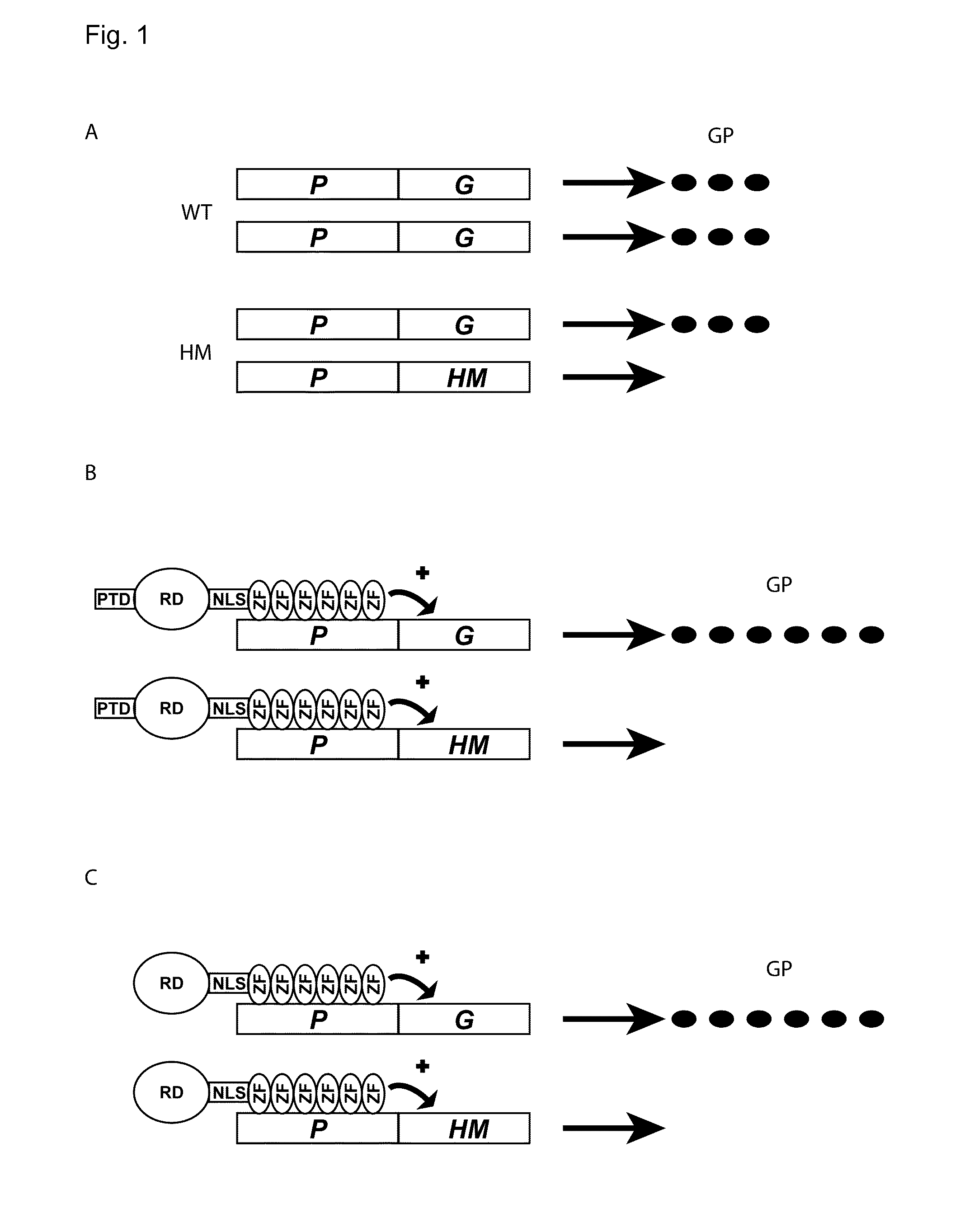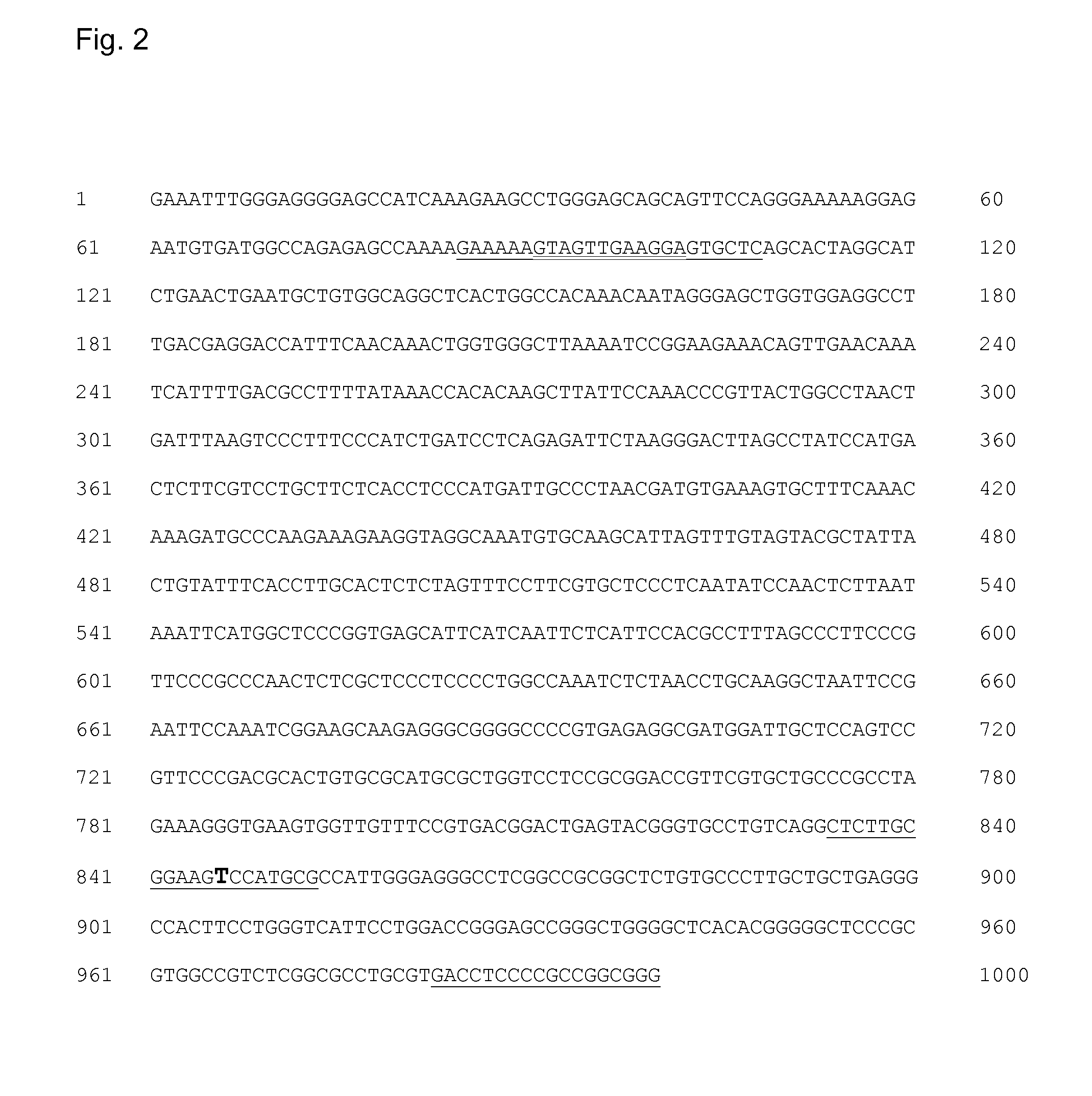Artificial transcription factors for the treatment of diseases caused by opa1 haploinsufficiency
- Summary
- Abstract
- Description
- Claims
- Application Information
AI Technical Summary
Benefits of technology
Problems solved by technology
Method used
Image
Examples
examples
[0059]For all cloning steps, restriction endonucleases and T4 DNA ligase are purchased from New England Biolabs. Shrimp Alkaline Phosphatase (SAP) is from Promega. The high-fidelity Platinum Pfx DNA polymerase (Invitrogen) is applied in all standard PCR reactions.
[0060]DNA fragments and plasmids are isolated according to the manufacturer's instructions using NucleoSpin Gel and PCR Clean-up kit, NucleoSpin Plasmid kit, or NucleoBond Xtra Midi Plus kit (Macherey-Nagel). Oligonucleotides are purchased from Sigma-Aldrich. All relevant DNA sequences of newly generated plasmids were verified by sequencing (Microsynth).
Cloning of Hexameric Zinc Finger Protein Libraries for Yeast One Hybrid
[0061]Hexameric zinc finger protein libraries containing GNN and / or CNN and / or ANN binding zinc finger (ZF) modules are cloned according to Gonzalez B. et al., 2010, Nat Protoc 5, 791-810 with the following improvements. DNA sequences coding for GNN, CNN and ANN ZF modules were synt...
PUM
| Property | Measurement | Unit |
|---|---|---|
| Composition | aaaaa | aaaaa |
Abstract
Description
Claims
Application Information
 Login to View More
Login to View More - R&D
- Intellectual Property
- Life Sciences
- Materials
- Tech Scout
- Unparalleled Data Quality
- Higher Quality Content
- 60% Fewer Hallucinations
Browse by: Latest US Patents, China's latest patents, Technical Efficacy Thesaurus, Application Domain, Technology Topic, Popular Technical Reports.
© 2025 PatSnap. All rights reserved.Legal|Privacy policy|Modern Slavery Act Transparency Statement|Sitemap|About US| Contact US: help@patsnap.com



